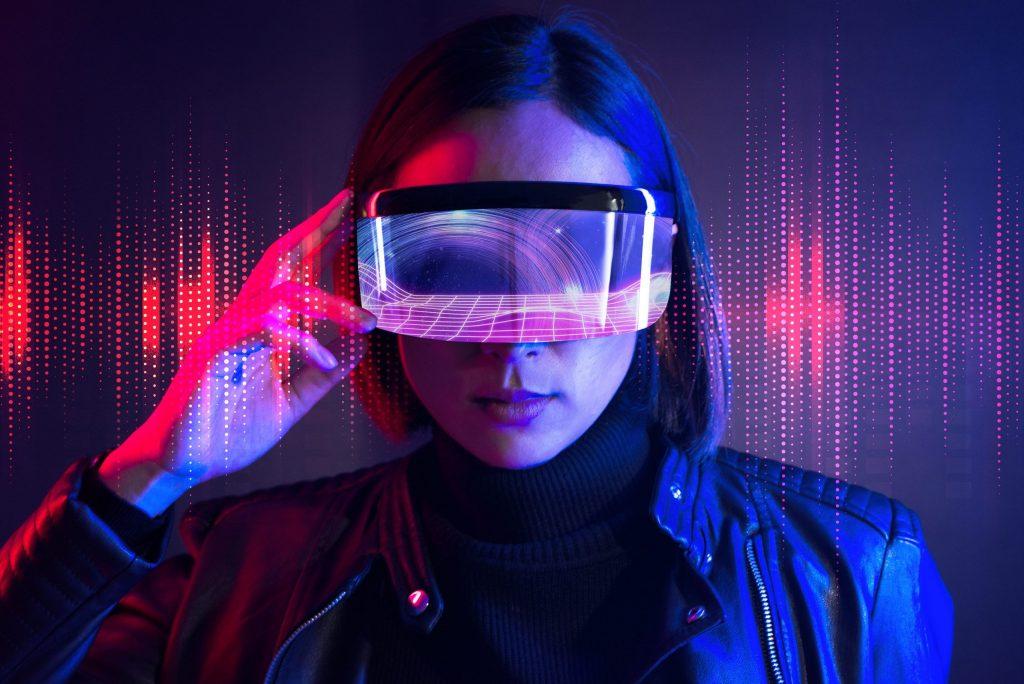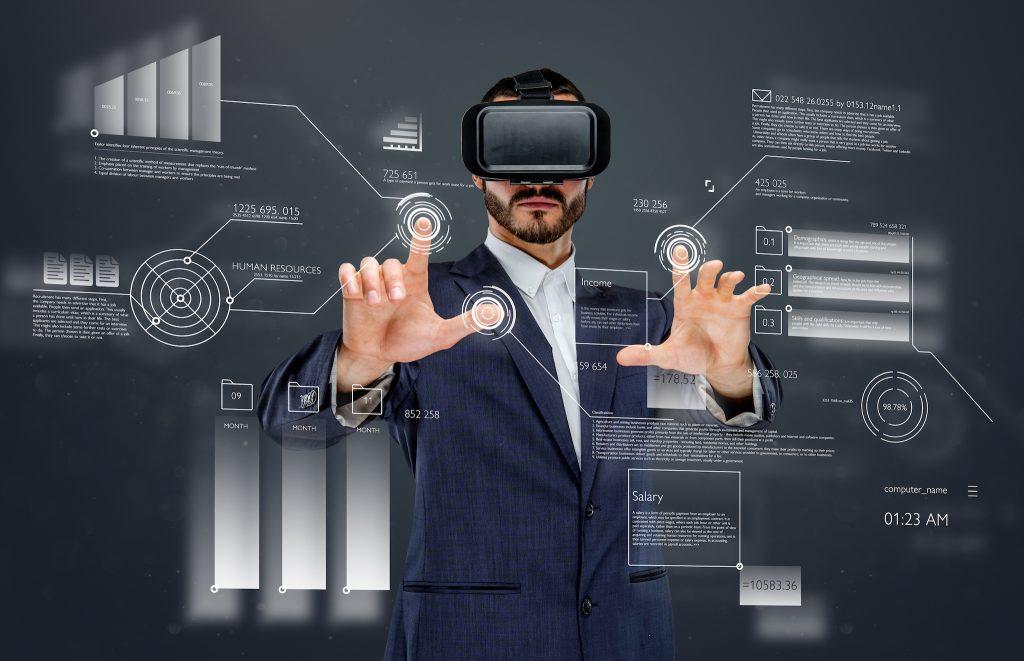Embracing the Metaverse: The Pinnacle of Immersive Technology, Virtual Reality, and Augmented Immersion
The metaverse is a rapidly evolving digital ecosystem that integrates elements from augmented reality (AR), virtual reality (VR), and the physical world. In this comprehensive guide, we explore the key components and benefits of the metaverse, and how businesses can leverage its potential to create immersive experiences for their customers.
The Pillars of the Metaverse: VR, AR, and Real World Interactions
The metaverse is built upon three core pillars that seamlessly blend to create a unified experience:
Virtual Reality (VR)
VR technology immerses users in a fully digital environment by using headsets and controllers. This allows for interactive experiences that are not limited by physical constraints.
Augmented Reality (AR)
AR enhances the real world by overlaying digital objects and information onto the user’s view. This can be achieved through smartphone applications, smart glasses, or other devices.
Real World Interactions
The metaverse incorporates real-world interactions, such as geolocation data and internet of things (IoT) devices, to create a more dynamic and engaging experience.
Key Benefits of the Metaverse for Businesses
There are numerous benefits to integrating the metaverse into your business strategy, including:
Enhanced Customer Engagement
The metaverse offers businesses the opportunity to create interactive experiences that foster deeper connections with their customers. This can lead to increased customer loyalty and brand awareness.
Streamlined Collaboration
By utilizing the metaverse, businesses can facilitate virtual collaboration among employees, reducing the need for physical office space and enabling global teams to work together more efficiently.
Related: What is the Metaverse Marketing? Unlocking the Future of Immersive Brand Experiences
Expanded Revenue Streams
The metaverse opens up new revenue streams for businesses, such as digital advertising, virtual goods sales, and subscription-based access to premium content or experiences.
How to Successfully Integrate the Metaverse into Your Business
To harness the potential of the metaverse, businesses should consider the following steps:
1. Identify Your Metaverse Strategy
Determine how the metaverse aligns with your business goals and target audience. Identify the key use cases and experiences that will resonate with your customers.
2. Leverage Existing Technologies
Incorporate existing VR and AR solutions into your metaverse strategy, ensuring that you’re building upon a strong foundation of proven technologies.
3. Develop Custom Experiences
Create unique, engaging experiences that differentiate your brand from competitors within the metaverse.
4. Establish Partnerships
Collaborate with other businesses and technology providers to expand your reach and enhance your metaverse offerings.
5. Monitor and Iterate
Continuously track the performance of your metaverse initiatives and adapt your strategy based on user feedback and market trends.
Metaverse Experiences: How to Fully Immerse Yourself in the Virtual World of Mixed Reality
The metaverse is a fascinating fusion of immersive virtual experiences, mixed reality, and 3D environments, all built upon a foundation of blockchain technology. To truly experience the metaverse and become an active part of this virtual world, consider the following opportunities and VR experiences:
Exploring Metaverse Experiences
There is a wide range of metaverse experiences available, from gaming and social interactions to educational and cultural events. These fully immersive experiences provide users with a unique opportunity to engage with others in a virtual space.
Utilizing the Metaverse for Business
Businesses can use the metaverse to create virtual showrooms, facilitate remote collaboration, or offer exclusive customer experiences. These immersive virtual environments can enhance brand awareness and customer engagement.
Participating in Mixed Reality Activities
Mixed reality combines elements of virtual and augmented reality, creating an environment where users can interact with both digital and physical elements. This allows for a more engaging and dynamic experience within the metaverse.
Embracing Blockchain Technology
Blockchain technology is an integral part of the metaverse, providing a decentralized framework for digital asset ownership and transactions. By understanding and leveraging blockchain technology, users can benefit from a secure and transparent metaverse ecosystem.
Experiencing the Metaverse Through VR
To fully experience the metaverse, users should invest in high-quality VR hardware, such as headsets and controllers. This will enable them to immerse themselves in the virtual world and take full advantage of the diverse range of metaverse experiences available.
Extended Reality and the Immersive Metaverse: Avatars, Artificial Intelligence, and the Nature of Virtual Experiences
Extended reality (XR) is a term that encompasses a range of immersive technologies, including virtual reality (VR), augmented reality (AR), and mixed reality (MR). These technologies play a crucial role in the immersive metaverse, shaping the nature of the metaverse and creating a new realm for digital interactions.
Avatars: The Digital Self in the Metaverse
In the immersive metaverse, avatars serve as the digital representation of users, enabling them to interact with the virtual environment and other users. Customizable avatars allow individuals to express their unique identities while participating in virtual reality experiences.
VR Headsets: The Gateway to the Metaverse
VR headsets are essential devices for accessing the metaverse, providing users with a fully immersive experience by transporting them into the virtual world. These devices come in various forms, from standalone headsets to those that require a connection to a powerful PC, catering to different levels of AR and VR experiences.
The Role of Artificial Intelligence in the Metaverse
Artificial intelligence (AI) plays a pivotal role in the development and operation of the immersive metaverse. AI algorithms can be used to create realistic, dynamic environments and enable more natural interactions with avatars and virtual objects. Additionally, AI-powered analytics can help businesses understand user behavior within the metaverse, allowing them to tailor their virtual offerings more effectively.
Integrating Extended Reality into the Metaverse
The immersive metaverse is a dynamic ecosystem that combines elements of VR, AR, and MR to create a seamless and engaging experience. By understanding and leveraging extended reality technologies, businesses and users alike can unlock the full potential of the metaverse and redefine the way they interact with digital environments.
Conclusion: Embracing the Metaverse as a Path to the Immersive Future
The metaverse is revolutionizing how businesses engage with their customers, employees, and partners. By understanding the core pillars of the metaverse and leveraging its potential, businesses can unlock the door to a more immersive, interactive, and engaging future.
FAQs
1. How can users play in the metaverse and engage with the digital world?
Users can play in the metaverse by accessing various platforms that offer games, social interactions, and immersive experiences. These platforms require compatible devices, such as VR headsets or smartphones, to allow users to fully engage with the digital world and interact with other users or digital objects.
2. What is immersive learning, and how does it relate to the metaverse?
Immersive learning is an educational approach that leverages the metaverse’s immersive qualities to create engaging and interactive learning experiences. This can include exploring virtual environments, interacting with digital objects or avatars, and participating in simulations, all of which can enhance learning outcomes and increase student motivation.
3. What are some examples of experiences like those found in the metaverse?
Experiences within the metaverse can vary widely, from attending virtual concerts and art exhibitions to exploring digital worlds and participating in multiplayer games. Other experiences may include virtual shopping malls, collaborative workspaces, and educational platforms that take advantage of the metaverse’s unique characteristics.
4. As the metaverse becomes more popular, how can businesses capitalize on its growth?
Businesses can capitalize on the metaverse’s growth by creating branded virtual spaces, offering exclusive digital goods or experiences, and utilizing immersive marketing strategies. Additionally, businesses can leverage the metaverse for internal operations, such as remote collaboration, employee training, or product development using digital twins.
5. What are digital twins, and how do they fit within the metaverse?
Digital twins are virtual replicas of physical assets, systems, or processes that allow businesses to monitor, analyze, and optimize their operations in real-time. Within the metaverse, digital twins can be utilized to create realistic simulations, test new designs or products, and provide a more immersive experience for users interacting with virtual environments.






Pingback: What is Metaverse Marketing? - Metaverse Canvas